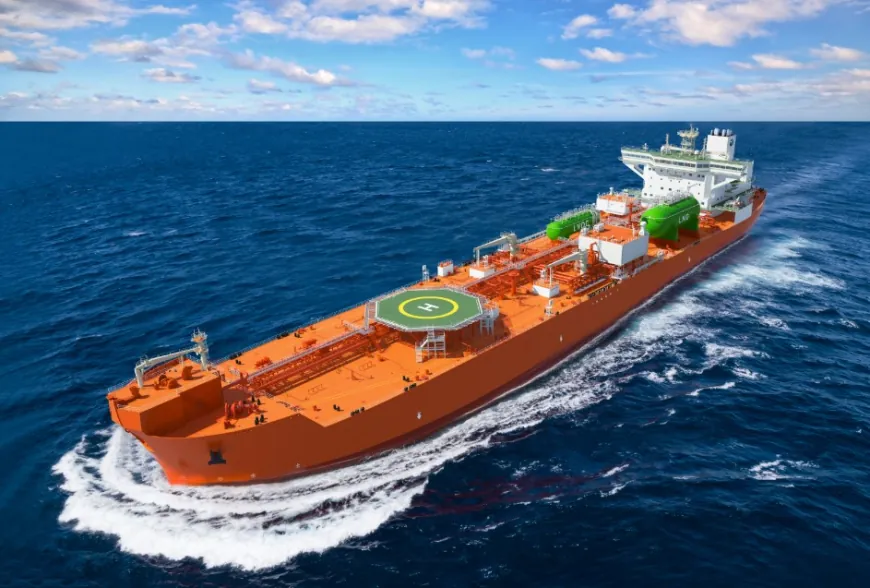LNG as a Bunker Fuel: Emerging Viable Cleaner Fuel Option

The Growth of LNG as a Bunker Fuel
The marine industry has been under increasing pressure in recent years to reduce emissions and adopt cleaner fuels to power vessels. With stricter regulations coming into effect through the International Maritime Organization (IMO), ship owners have been exploring various alternatives to traditional bunker fuels like heavy fuel oil. Liquefied natural gas (LNG) has emerged as one of the most promising options, with growing support from classification societies, ship owners and governments.
LNG produces significantly lower emissions of particulate matter, nitrogen oxides and sulfur oxides compared to conventional fuels. This makes it attractive from an environmental standpoint to meet the IMO's emission reduction targets. The global LNG bunkering infrastructure is also expanding rapidly with more ports developing LNG bunkering facilities. Major classification societies like Lloyd's Register, DNV and Bureau Veritas have approved the use of LNG as a marine fuel. An increasing number of new ships, especially container vessels and tankers, are being built LNG-ready or dual-fuel capable.
Challenges in Adopting LNG as a Bunker Fuel
While the advantages of LNG As Bunker Fuel are clear, there are still some challenges holding back its wider adoption in the shipping industry:
- Infrastructure: Developing the global network of LNG bunkering and supply infrastructure requires heavy investments. Currently only a limited number of ports worldwide have LNG bunkering facilities. This restricts the operating range of LNG-powered ships.
- Tank Space: LNG requires roughly 30-40% more tank space than conventional fuels due to its cryogenic state. This reduction in cargo space impacts vessel economics, especially on smaller ships. New containment systems need to be developed further.
- Safety Concerns: As a cryogenic liquid, LNG poses certain safety risks that need to be thoroughly addressed through careful vessel design, stringent operating procedures and crew training. Perceptions around its safety remain a challenge.
-Cost: LNG engines are more expensive than conventional fuel engines. Bunker prices are currently higher than heavy fuel oil in many ports as well. Total cost of ownership remains hard to quantify given fluctuating fuel prices.
-Technology Maturity: Dual-fuel engines are still a relatively new technology compared to traditional fuel engines. Further improvements are required to reach the same operational efficiencies and uptime.
Addressing the Challenges to Drive Greater LNG Adoption
Despite the challenges, the momentum behind LNG is growing steadily as risks are mitigated and solutions found:
- Infrastructure Development: Major ports across Europe, Asia and North America have committed huge investments towards LNG bunkering facilities. New infrastructure will enter service over the next 1-2 years in key trade routes.
- Standardization: Classification societies have published detailed guidelines on LNG fuel system designs and safety standards. The IMO has also unveiled the first set of international codes for using LNG as ship fuel, promoting globally accepted best practices.
- New Containment Technologies: Innovative cargo containment systems such as membrane tanks have reduced space requirements. Fuel tanks are being installed in ship designs more efficiently.
- Cleaner Engines: Engine manufacturers have upgraded dual-fuel engine technologies, improving their efficiencies close to conventional fuel engines. On-board storage and handling has also become safer with new containment designs.
- Global Momentum: Major ship owners like MOL, SZM and CMA CGM have committed to adopting LNG dual-fuel vessels on key international routes, encouraging the supply chain to invest in infrastructure development.
Building on Success: LNG as a Bunker Fuel Future Prospects
With environmental regulations getting more and more stringent, the pressure for the shipping industry to find cleaner fuels will only rise in the coming years. LNG appears well-positioned to play a major role in the industry's decarbonization efforts. Some of the key factors that will further accelerate LNG's growth include:
- Carbon pricing measures: Market-based approaches like carbon pricing are expected to level the playing field for higher cost cleaner fuels like LNG in the long run versus conventional fuels. This will make investments in LNG solutions more commercially viable.
- R&D on bio-LNG and synthetic LNG: The development of bio-LNG, produced from biomass or organic waste, as well as synthetic LNG leveraging renewable power, will enhance LNG's green credentials. Thisopens up the possibility of achieving near-zero or zero-emission operations.
-Global policy push: Continued support from governments and regulators through incentives, guidelines and emission reduction targets will send strong signals to shipping companies and fuel suppliers to establish the LNG infrastructure and switch to gas propulsion technology.
With an estimated 30-50% of the global fleet expected to be dual-fuel capable or gas-powered by 2050, LNG's future as a mainstream marine fuel looks bright. Its potential to significantly reduce emissions makes it critical to the decarbonization of the shipping industry.
Get more insights on LNG as a Bunker Fuel
Discover the Report for More Insights, Tailored to Your Language
About Author:
Ravina Pandya, Content Writer, has a strong foothold in the market research industry. She specializes in writing well-researched articles from different industries, including food and beverages, information and technology, healthcare, chemical and materials, etc.












